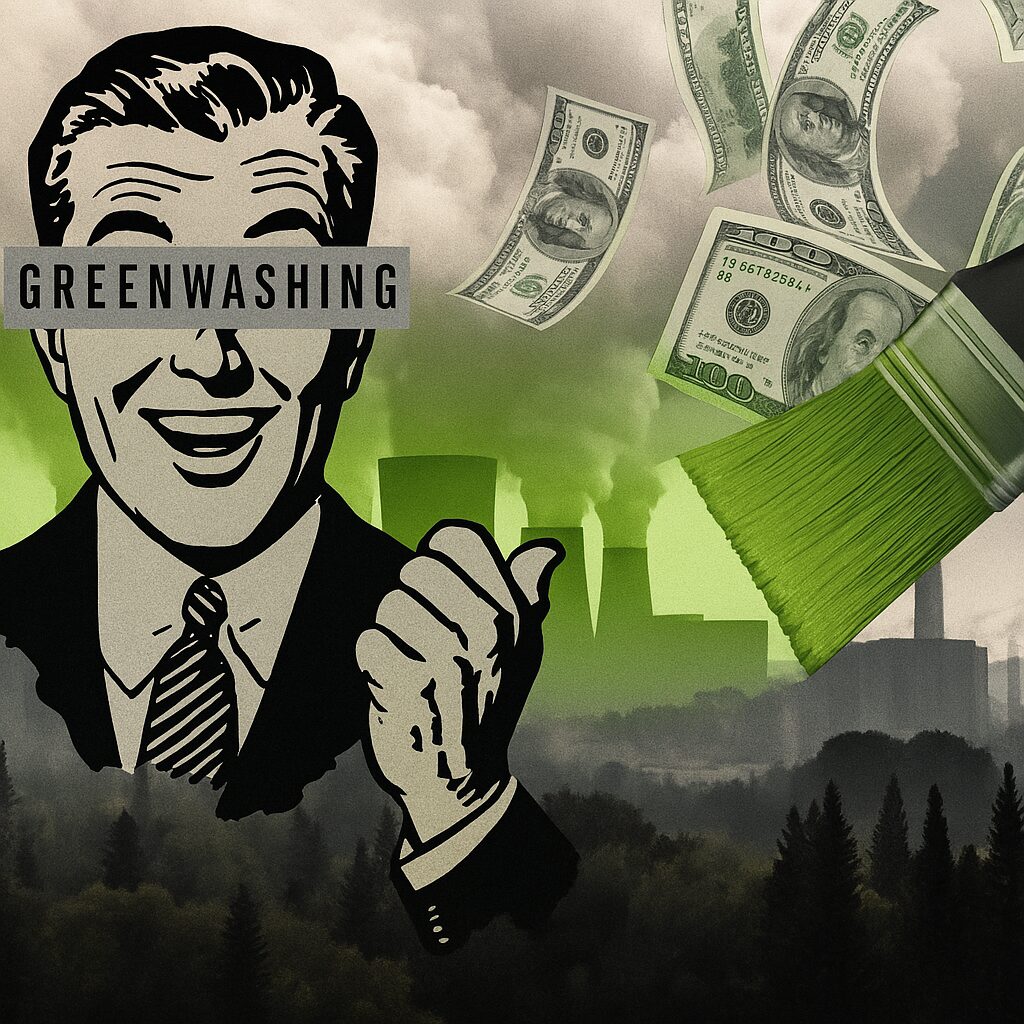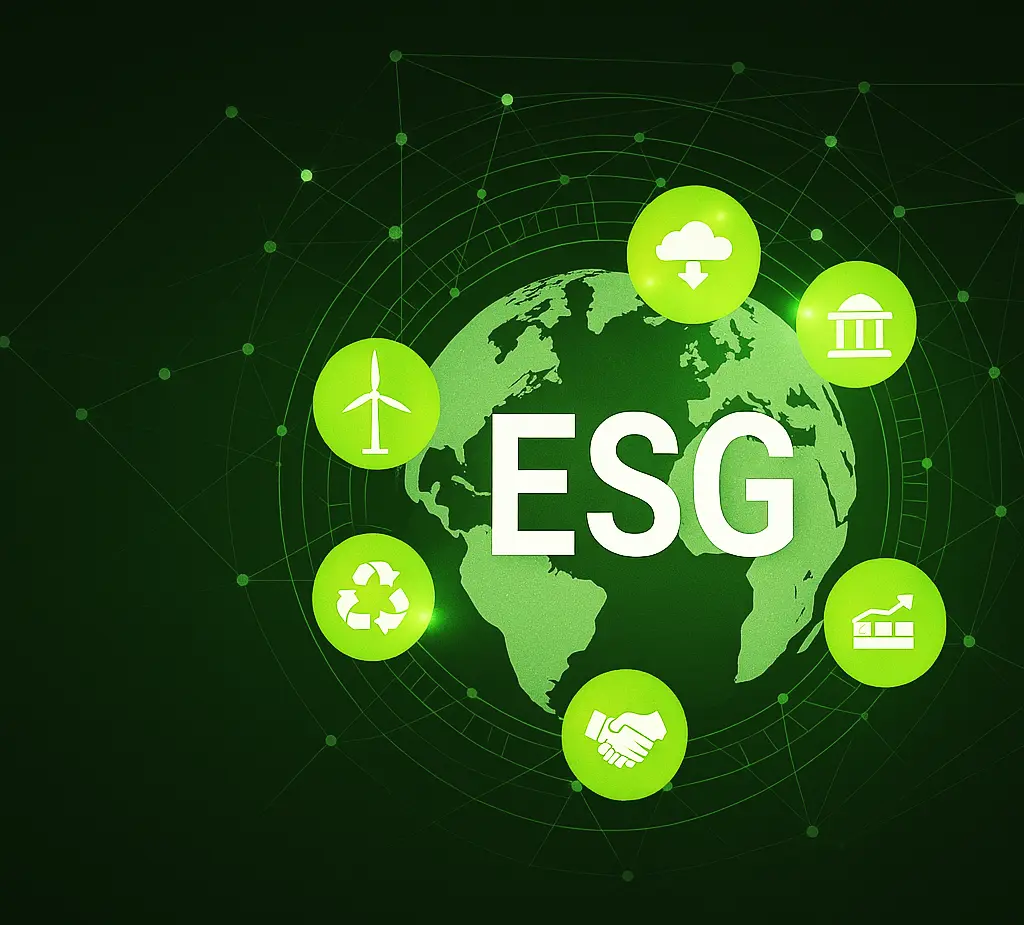
AI Shines a Spotlight on ESG Greenwashing
Peeling Back the Eco-Friendly Façade
Greenwashing has become the dirty little secret of ESG investing. Companies slap on eco-friendly labels without real impact.
Thanks to AI-driven tools, that’s getting harder to fake.
AI doesn’t just analyze surface-level data. It dives deep—scanning reports, social media, satellite imagery, even employee reviews—for red flags.
That means fewer companies can hide behind vague promises or buzzwords.
How ESG Ratings Have Failed Us
Vague Metrics and Conflicting Scores
Here’s the thing: ESG ratings from different agencies often contradict each other.
Why? Because there’s no unified standard. One firm might reward strong governance. Another might ding the same company for carbon emissions.
These scorecards rely heavily on self-reported data, which makes them vulnerable to manipulation.
Enter AI. It cuts through the fluff by comparing claims with actual behavior.
Natural Language Processing Unmasks Empty Promises
Reading Between the Lines—Literally
AI models using natural language processing (NLP) are trained to detect tone, patterns, and inconsistencies.
They scour sustainability reports, press releases, and regulatory filings to flag discrepancies.
For example, if a company says it’s “carbon neutral” but still reports rising emissions—NLP tools catch the contradiction.
Even subtle greenwashing tricks, like vague wording or future-based goals (“we aim to reduce…”), are flagged.
Satellite Data and AI: Watching from Above
When You Can’t Hide from the Sky
Some AI tools tap into satellite data to see if what’s claimed on paper matches the real-world picture.
Is a “protected forest” still intact? Are emissions visible from space? AI can cross-reference geographic and environmental data in real-time.
Companies that say one thing but do another? They’re getting exposed—visually.
Did You Know?
AI systems can detect methane leaks from oil fields just by analyzing thermal satellite images? That’s next-level accountability.
Social Media Analysis Reveals Hidden Truths
Workers and Customers Tell a Different Story
What companies say publicly can differ wildly from how they act behind the scenes.
AI scrapes social platforms, forums, and employee review sites for sentiment analysis and whistleblower clues.
If workers complain about toxic waste dumping or unsafe labor conditions—AI picks up on that.
Crowd-sourced truth is harder to spin, and AI makes it louder.
The Tech Pushing Transparency to the Edge
The story doesn’t end with detection.
Next up, we’ll explore how machine learning is not just calling out greenwashing—but reshaping how ESG portfolios are built.
It’s not about naming and shaming—it’s about building smarter, cleaner investments.
Machine Learning Rewrites ESG Portfolio Strategies
From Risk Avoidance to Smart Allocation
Old-school ESG investing was reactive—just avoid the bad actors.
Now, machine learning (ML) turns it proactive.
It analyzes thousands of variables—real-time emissions data, governance trends, supply chain risks—to fine-tune ESG scores beyond generic labels.
That means better decisions on who to invest in, based on actual sustainability performance.
Predictive Analytics Forecast Corporate Behavior
Tomorrow’s ESG Score, Today
AI doesn’t just evaluate past performance—it predicts future ESG risks.
Using predictive analytics, it spots trends like rising pollution patterns, regulatory risks, or social unrest linked to supply chains.
If a company says it will improve its climate impact, AI can forecast if it’s likely to happen based on historical patterns.
That gives investors a forward-looking edge.
Transparency Tools Are Leveling the Playing Field
Smaller Firms Get a Chance to Compete
AI tools are democratizing ESG disclosure.
Smaller companies that can’t afford big PR campaigns now use AI-driven transparency platforms to showcase credible sustainability efforts.
No more getting drowned out by big corporations greenwashing their way to higher ratings.
This is a huge win for investors seeking under-the-radar gems with true impact.
AI Enhances Regulatory Compliance Checks
Automating Accountability
Regulators are catching up—and AI is helping them enforce.
Automated tools now track ESG-related claims, flagging violations of environmental or labor laws in real time.
Think of it as a watchdog that never sleeps.
As global ESG regulations tighten (like Europe’s SFDR), AI ensures compliance is more than just paperwork.
Key Takeaways: AI’s Power in Redefining ESG

- AI reads between the lines, spotting inconsistencies across public and private data.
- Machine learning predicts future ESG risks, not just current issues.
- Smaller firms benefit from AI transparency, finally competing with bigger brands.
- Regulators use AI too, making enforcement faster and sharper.
Coming up: The visionary side of this tech shift, plus bold predictions on how AI will evolve ESG—and expose even more greenwashing tricks.
What’s Next for AI and ESG in 2025?
We’re entering a future where ESG investing will depend as much on data integrity as financial returns.
AI-Powered ESG Scores Will Become Standardized
Toward One Universal Language of Sustainability
Expect a major shift in the way ESG scores are calculated.
Right now, inconsistency reigns. But as AI matures, standardized, real-time ESG ratings will become the norm.
These scores will rely less on company-reported data—and more on AI-verified behavior from multiple sources.
Investors and regulators alike will push for one global ESG language, driven by transparent algorithms.
Real-Time Monitoring Will End Quarterly Greenwashing
Always-On Oversight
Quarterly reports and polished sustainability decks? They’re already outdated.
AI tools offer real-time monitoring of emissions, water use, labor practices, and supply chain ethics.
That means investors won’t wait for a press release to find out if a company’s acting shady.
And companies? They’ll know someone’s always watching—literally.
ESG Fraud Will Be Treated Like Financial Fraud
Criminal Charges May Not Be Far Off
As AI uncovers false ESG claims more reliably, expect real consequences.
We’re talking lawsuits, fines, and even criminal charges for companies that knowingly mislead investors.
Think of it as the Enron moment for greenwashing. And AI is the whistleblower.
The SEC and other watchdogs are already exploring how to classify ESG deception as securities fraud.
Investors Will Demand Explainable AI in ESG
Not Just Smart—Understandable
Here’s the catch: even the smartest AI must be explainable.
Investors and regulators want to know why a model flagged a company for greenwashing.
This is pushing a wave of transparent, interpretable AI—where every decision is backed by traceable logic.
In short, black-box models are out. Clear, evidence-based ESG analysis is in.
Expert Opinions on AI’s Role in ESG
Is AI the Solution or Just Another Tool?
Many experts see AI as a breakthrough in cracking the ESG code. It brings unmatched speed and scale to greenwashing detection.
According to the CFA Institute, AI can significantly reduce investor reliance on flawed ESG ratings by comparing corporate claims with external datasets, including emissions tracking and supply chain records.
Read more ›
On the academic side, a study in Energy Economics argues AI applications actively suppress greenwashing. But it also warns that AI should complement human oversight, not replace it.
Explore the study ›
Debates and Controversies in AI-Led ESG
Can We Trust the Bots?
Not everyone’s sold.
Critics worry that AI might replicate biases baked into training data. Others question the ethics of using “black-box” models without clear explanations.
A thoughtful piece from Monash University dives into both sides—framing AI as “friend or foe” in the fight against greenwashing.
Another big issue? There’s no global ESG standard yet. Without uniform metrics, AI models may produce wildly different results—hurting credibility.
Journalistic Insights: Frontline Reports on ESG & AI
What the Media’s Uncovering
Fortune Magazine points out that AI is directing serious capital away from the greenwashers and toward actual sustainable performers.
Meanwhile, Reuters highlights a growing paradox: the very AI systems meant to clean up ESG investing are causing a surge in power consumption, especially among tech giants. Investors are starting to push back.
And then there’s enforcement.
In a headline-making case, Vanguard agreed to a multimillion-dollar settlement over misleading ESG fund claims. Cases like these may become the norm as AI exposes more false narratives.
Future Outlook: ESG and AI Converge into Real Impact
AI is not a trend—it’s becoming the backbone of ESG investing.
By 2026, AI-driven ESG platforms could become as essential as Bloomberg terminals.
With satellite feeds, real-time metrics, and social listening baked in, the new ESG normal will be rooted in truth—not PR.
We’re heading toward a world where sustainable investing is no longer based on hope, but on hard data.
What Do You Think?
Is your portfolio protected against greenwashing?
Do you trust current ESG ratings—or are you looking for smarter, AI-driven insights?
Drop your thoughts in the comments. Let’s spark a conversation about the future of honest investing.
Final Thoughts: The End of the ESG Illusion?
The age of performative sustainability is cracking.
Thanks to AI, investors are no longer at the mercy of polished brochures and marketing speak.
Greenwashing is being exposed—systematically, relentlessly, and in real time.
And that means the ESG movement is finally growing up.
FAQs
Can AI track ESG performance in real-time?
Yes—and that’s one of its biggest advantages.
Unlike quarterly ESG reports, AI tools pull from live data sources like satellite feeds, emissions monitors, public databases, and social media.
For example, real-time tracking can reveal if a company’s factory emits more CO₂ than reported, or if workers are speaking out on unsafe conditions that aren’t documented in formal reports.
It’s like having a 24/7 ESG dashboard.
Are small or mid-sized companies at a disadvantage in AI-driven ESG analysis?
Surprisingly, no—AI can actually level the playing field.
While large corporations may dominate headlines, AI allows credible small firms to showcase their sustainability efforts using verifiable data and transparency platforms.
For instance, a sustainable fashion brand might use blockchain-backed sourcing data to prove ethical practices—data that AI can analyze and promote more credibly than vague marketing.
It gives smaller players a fair shot at visibility in ESG investing.
How does AI help investors build cleaner portfolios?
AI goes beyond “checklist” investing.
Instead of avoiding just the obvious polluters, it helps investors identify truly sustainable performers based on behavior, not branding.
Imagine an AI model evaluating two energy firms—one with strong ESG marketing, the other with quiet but verifiable emissions reductions. It will prioritize the performer, not the promoter.
This leads to data-driven, high-integrity portfolio construction.
What does explainable AI mean in ESG investing?
Explainable AI (or XAI) means investors and regulators can understand how AI reaches its conclusions.
If a company is flagged for greenwashing, XAI tools will show which statements or behaviors triggered the flag—maybe a mismatch between emissions reports and satellite data, or misleading claims in a sustainability report.
Without this transparency, investors might struggle to trust AI-driven ratings or alerts.
It’s all about accountability in automation.
Resources
Trusted Reports & Guides
• SASB Standards by ISSB:
Frameworks for consistent ESG disclosure across sectors. Ideal for comparing what companies should be reporting.
• UN Principles for Responsible Investment (PRI):
A global benchmark for ethical investing, with case studies, regulatory trends, and AI integration analysis.
• OECD: ESG Investing and Sustainability Risks:
Deep dive into greenwashing risks and the role of AI in enhancing ESG transparency.
AI & ESG Analysis Tools
• RepRisk AI Risk Analytics:
AI-powered ESG risk data tool that tracks over 200,000 public sources daily to identify hidden reputational risks.
• Climate TRACE:
A nonprofit coalition using satellite and AI data to monitor global greenhouse gas emissions in near real-time.
• Sustainalytics:
Offers ESG ratings and AI-enhanced data that flag greenwashing in investment portfolios.
Informative Articles & Case Studies
• MIT Technology Review: Can AI Really Fix ESG Investing?:
An honest look at the capabilities and limitations of AI in policing green claims.
• Harvard Business Review: The Truth About Greenwashing:
Unpacks how marketing, regulation, and data transparency collide in the ESG world—and where AI fits in.
• World Economic Forum on Greenwashing and Tech:
Tracks how AI, blockchain, and transparency tools are transforming sustainable finance.